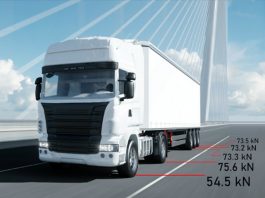PEC has developed its own weigh-in-motion system to prevent infrastructure problems and produce accurate measurement data.
A major component of a successful economy is reliable transport infrastructure. As economic activity is increasingly focused around cities, urban populations grow; along with traffic, public transport capacity and our need to detect and prevent structural damage and dangers. Road transport continues to be used over public transport – meaning governments need to focus on designing, inspecting and controlling intelligent transport and infrastructure in order to meet the needs of cities and their future demands.
Road Traffic Technology, Intelligent Traffic Systems (ITS) and civil work must now provide the safe infrastructure to handle the increasing volume of transport in our cities as well as integrating the public transport systems of the future.
Tackling the logistics of these costly projects can require experts in the field, as waiting for damage to reveal itself, means that last-minute solutions prove costly, time consuming and inefficient. Innovation News Network spoke to Dr Markus Petschacher of Petschacher Consulting (PEC) to find out what PEC can do to provide timely solutions to ageing and dangerous infrastructure.
What is the importance of a consultation company for transport infrastructure?
Basic work must be done in order to implement the most efficient work plan, lengthen the operational time of infrastructure, reduce pollution and to tackle any administration and logistical challenges. Although the focus is laid on the construction itself, administrators must react to challenges and take a pro-active approach to tackling projects. Designing, inspecting and controlling intelligent transport and infrastructure are important tasks that we can handle. Besides that, our focus is on maintenance support, which means predicting costs, prevention of infrastructural problems and supporting decision-makers in tackling the uncertainties of the future.
What ITS do you believe to be most important to structural health monitoring; how important is the development of more ITS for infrastructure?
If infrastructure is built and forgotten – not observed any more – we face an increased risk of sudden breakdown. Interruptions can lead to serious consequences. Actual productivity in highly developed countries is highly dependent on traffic infrastructure. Internet of Things (IoT) and Road Traffic Technology tools can help with actual and predicted asset value of infrastructures, as the value is always changing due to retrofitting and traffic usage.
The steadily increasing traffic volume and a very limited budget for intelligent transport and infrastructure could lead to our transport infrastructure coming to a point where it will not be able to handle the necessary transport volume. At this point, replacement of weaker parts would be a serious issue. Therefore, we aim to replace those parts ahead of time to prevent this from happening.
For this it will be essential to get management capabilities back. ITS or structural health monitoring is our approach to this issue. It is the opposite of the current bottoms up model where many opportunities for investments, which could prevent future problems, are ignored and huge amounts of money are used to create inferior solutions at the last possible moment.
How does the Weigh-In-Motion (WIM) system work; how is data collected and stored?
PEC has developed its own WIM system – iBWIM Spider – to underline IoT paradigms, which can be rented in units or sold completely with hardware and software and is working successfully across different areas in Europe. This system for bridge and structure surveillance measures expansions while heavy good vehicles cross bridges and therefore can determine the bridge’s service life. The system does not require sensors to be installed on the road surface and measurements can be taken from one day up to several years.
The data that our sensors gather is transmitted to a router via cable connection. There it is collected and stored on a permanent memory, as well as sent to our server. Clients can always use our iBWIM Viewer or the iBWIM Client to view the information of their projects, stored on the server.
As well as monitoring current data in real time, customers can also use a simulation-function for past data. The iBWIM Spider system also enables the integration of third-party devices such as sensors, lasers and cameras of various suppliers. The system can produce highly accurate measurement results and by combining sensor information with raw signal parameters, can enable PEC to provide a complete picture of the heavy vehicles crossing bridges.
How can PEC help in making the right decisions for intelligent transport and infrastructure?
Prevention and solutions need to be provided in a timely manner in order to avoid any costly issues arising and to inform future projects. We can help to make the right decisions by presenting not only the results of our measurement but also pointing out what problems could arise in the future. Obviously, we can present possible solutions to prevent these issues from arising. From our data analysis we can also offer advice on what steps to take to prevent similar issues in future projects.
What does the future hold for the infrastructure industry – should we expect to see any new developments in monitoring and engineering work?
Road Traffic Technology, Intelligent Traffic Systems and the Internet of Things are playing a leading role in the development of monitoring and engineering to ensure accurate and efficient work is done on new intelligent transport and infrastructure systems. It is vital that cities adopt these technologies in order to continue to provide the growing demand for safe infrastructure, as well as repair works on existing infrastructure.
The Internet of Things will immensely affect this industry by turning infrastructural objects into data, which we can access at any time, with monitoring systems. We are already changing the way maintenance works. This enables us to manage infrastructure more effectively and puts us into an active position, instead of having to react suddenly when shortcomings become evident.
PEC aim to provide quality information without overloading clients, so raw data in gigabytes can be turned into megabytes, and traffic-flow and axle-load models have been developed. Both allow for a reduction in the volume of data – amounting in just a few kilobytes which makes the data much easier for clients to handle.
Dr Markus Petschacher
PEC – Petschacher Consulting, ZT-GmbH
+43 4276 33780









